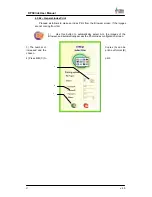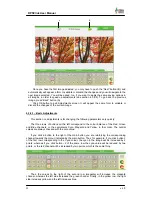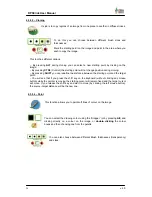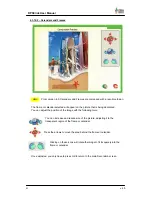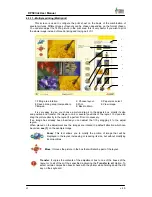
30
DPSClick User Manual
v. 4.0
The three rows of buttons on the right correspond to the balance of brightness, contrast and
colour saturation, in that same order and from top to bottom. The central values are always
checked with the zero value.
To increase the value of any of the three aforementioned parameters, click the buttons to
the right of the zero value and to the left to reduce them.
4.3.8.2 – Fine Adjustment
The parameters adjusted in this section are the same as the previous ones, the
difference being that they can be made with greater precision. To change the values of the
different control bars use the main button or else click on the increase (+) and reduce (–)
buttons.
The order of the controls is exactly the same as in the previous section: cyan, magenta,
yellow, brightness, contrast and saturation. Click the number of the value to reset the bar to
zero.
4.3.8.3 – Histogram Adjustment
In the Histogram tab the histogram can be adjusted automatically or manually.
What is the
histogram
?
Basically, it provides information on the distribution of the levels of intensity (light) in the
whole image. This can be highly useful in analysing and enhancing an image that seems to
be flat or rather “undynamic”. This is a very common problem in many digital cameras on the
market, as well as in scanners, although the latter tend to have built–in automatic image
enhancement tools when they have been bought with the device.
In the histogram, the horizontal axis has 256 different values (0 to 255) which are really
the different values of intensity that a pixel or dot of the image may have.
The vertical axis indicates how many real pixels of the image analysed have the value of the
X axis. The example shows that around a brightness value of 50 (horizontal axis), there are
many pixels or points of the image (vertical axis). We are talking about an image that tends
towards dark values.
In the example, the pixels that have the lowest value are not at the top left, and the
same occurs with the highest values, but with the top right. This means that the whole
dynamic range offered by a digital image is not being leveraged, and not all the possible
values are being used.












